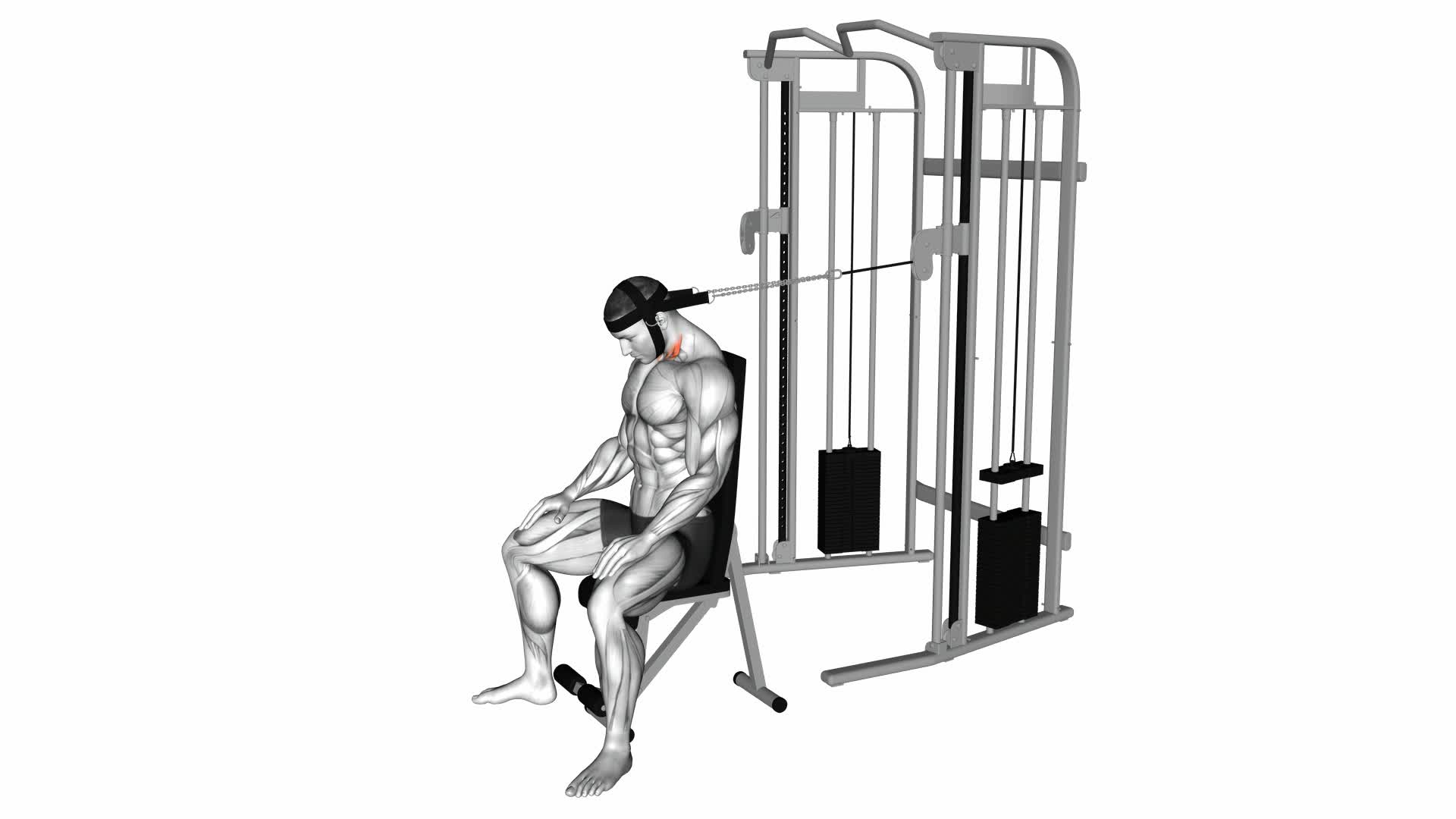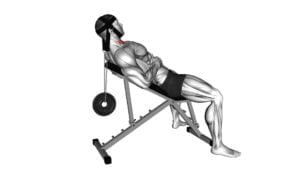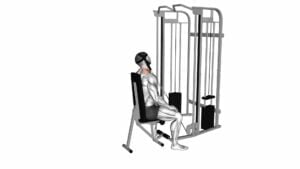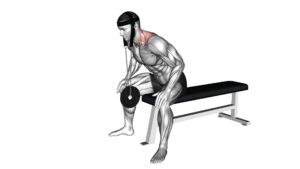Cable Seated Neck Flexion (With Head Harness) – Video Exercise Guide & Tips

In this video exercise guide, you'll learn all about cable seated neck flexion with a head harness. This exercise is designed to strengthen and stabilize your neck muscles.
Watch This Exercise Video
With just a few pieces of equipment, you can easily perform this exercise at home or at the gym.
By following proper form and technique, you'll maximize the benefits and avoid common mistakes.
We'll also share tips on progressing and adding variation to challenge yourself even further.
Let's get started!
Key Takeaways
- Cable seated neck flexion increases neck strength and flexibility.
- It is effective for injury prevention and reduces the risk of neck injury.
- The exercise improves posture and reduces neck pain and stiffness.
- Gradually increasing weight and varying the tempo can help with progression.
Benefits of Cable Seated Neck Flexion
You can experience increased neck strength and flexibility through the benefits of cable seated neck flexion. This exercise is highly effective for injury prevention and improving posture. Cable seated neck flexion specifically targets the muscles in the front of your neck, known as the cervical flexors. Strengthening these muscles can help stabilize your neck and reduce the risk of injury during physical activities or everyday movements.
By regularly performing cable seated neck flexion, you can improve your neck's ability to handle stress and strain. This exercise involves sitting on a cable machine with a head harness attached. The cable is then adjusted to provide resistance as you flex your neck forward against it. This motion not only strengthens the muscles in your neck but also increases their flexibility.
In addition to injury prevention, cable seated neck flexion can also have a positive impact on your posture. Many people spend hours each day hunched over computers or mobile devices, which can lead to poor posture and neck pain. By strengthening the cervical flexors, cable seated neck flexion helps counteract the effects of forward head posture, promoting a more upright and aligned position.
Equipment Needed for Cable Seated Neck Flexion
To perform cable seated neck flexion, you'll need specific equipment. Here are the items you'll need to properly execute this exercise:
- Head Harness: This is an essential piece of equipment for cable seated neck flexion. The head harness is designed to securely attach to your head and provide resistance during the exercise.
- Cable Machine: A cable machine is required to perform this exercise. It consists of a weight stack, cables, and pulleys that allow you to adjust the resistance level and target specific muscle groups.
- Weight Plates: Depending on your fitness level and desired intensity, you may need to add weight plates to the cable machine. These plates will increase the resistance and challenge your neck muscles further.
- Adjustable Bench: An adjustable bench is useful for providing support and stability during the exercise. It allows you to sit comfortably while performing the neck flexion movement.
With these equipment items, you'll be ready to perform cable seated neck flexion and target your neck muscles effectively.
Now, let's move on to the next section, where we'll discuss the proper form and technique for cable seated neck flexion.
Proper Form and Technique for Cable Seated Neck Flexion
To perform cable seated neck flexion with proper form and technique, it's important to maintain a neutral spine position and engage your neck muscles throughout the exercise. This will help you maximize the benefits and minimize the risk of injury. One common mistake is using too much weight, which can strain the neck and lead to discomfort. Start with a lighter weight and gradually increase as you feel comfortable and confident in your ability to maintain proper form.
Another mistake to avoid is using momentum to complete the movement. It's important to control the motion and focus on the contraction of the neck muscles. This will ensure that you're targeting the intended muscles and getting the most out of the exercise.
To progress in this exercise, you can gradually increase the weight or resistance. However, it's important to do so gradually and only when you can maintain proper form and technique. Another progression tip is to vary the tempo of the exercise. Slow and controlled movements can increase the intensity and challenge your muscles in a different way.
Common Mistakes to Avoid During Cable Seated Neck Flexion
One common mistake to avoid during cable seated neck flexion is using too much weight, which can strain the neck and lead to discomfort.
To ensure you're performing the exercise correctly and safely, here are some common mistakes to avoid and tips for maintaining proper form:
- Using excessive resistance: Using too much weight can put unnecessary strain on the neck muscles and increase the risk of injury. Start with a lighter weight and gradually increase as your strength and technique improve.
- Rounding the shoulders: It's important to maintain proper posture throughout the exercise. Avoid rounding your shoulders forward, as this can place additional stress on the neck. Keep your shoulders back and down throughout the movement.
- Jerking the head: Avoid jerking or using quick, sudden movements during cable seated neck flexion. This can strain the neck muscles and potentially cause injury. Instead, focus on smooth and controlled movements.
- Not engaging the core: Your core muscles play a crucial role in stabilizing your body during this exercise. Failure to engage your core can lead to improper form and decreased effectiveness. Remember to tighten your abdominal muscles throughout the movement.
By avoiding these common mistakes and maintaining proper form, you can maximize the benefits of cable seated neck flexion while minimizing the risk of injury.
Always consult with a fitness professional before starting any new exercise program.
Tips for Progressing and Adding Variation to Cable Seated Neck Flexion
To progress and add variation to cable seated neck flexion, incorporate different resistance levels and perform additional exercises targeting different neck muscles. When it comes to increasing the resistance level, start by adjusting the weight on the cable machine. Begin with a lighter weight and gradually increase the load as you become stronger. This progression will challenge your neck muscles and help you build strength over time.
Another way to add variation is by changing the angle of the cable. Instead of sitting upright, try adjusting the seat to a slightly reclined position. This will engage different muscles and provide a different stimulus to your neck flexion exercise.
You can also incorporate different exercises that target specific neck muscles. For example, you can perform lateral neck flexion exercises by tilting your head sideways, bringing your ear towards your shoulder. This will work the muscles on the side of your neck. Additionally, you can perform neck extension exercises by tilting your head back, looking towards the ceiling. This will target the muscles at the back of your neck.
Frequently Asked Questions
Can Cable Seated Neck Flexion Help With Neck Pain or Stiffness?
Cable seated neck flexion can be beneficial for neck pain or stiffness. By incorporating this exercise into your regular workout routine, you can strengthen the muscles in your neck and improve flexibility.
However, it's important to take precautions before starting these exercises. Make sure to consult with a healthcare professional or a certified trainer to ensure proper form and technique. Also, listen to your body and start with lighter weights before progressing to heavier ones.
How Frequently Should Cable Seated Neck Flexion Be Performed for Optimal Results?
For optimal results, you should consider the frequency of cable seated neck flexion. It's important to perform this exercise regularly to activate the neck muscles effectively.
The right frequency will vary depending on your individual goals and fitness level. Consult with a fitness professional to determine the appropriate frequency for you.
Is It Safe to Perform Cable Seated Neck Flexion if I Have a History of Neck Injuries?
Performing cable seated neck flexion exercises may not be safe if you have a history of neck injuries. It's important to take neck flexion precautions to avoid worsening any existing conditions.
Instead, consider alternative neck exercises that are less stressful on the neck.
It's always recommended to consult with a qualified professional, such as a physical therapist or doctor, before starting any exercise program, especially if you have a history of neck injuries.
Can Cable Seated Neck Flexion Help Improve Posture?
Performing cable seated neck flexion can greatly benefit your overall spinal health and help improve your posture. This exercise specifically targets the muscles in your neck and upper back, which play a crucial role in maintaining proper alignment and reducing strain on your spine.
To perform this exercise effectively, ensure that you're using the proper equipment, maintaining proper form, and starting with a weight that's suitable for your fitness level.
Are There Any Alternative Exercises That Target the Same Muscles as Cable Seated Neck Flexion?
If you're looking for alternative exercises that target the same muscles as cable seated neck flexion, there are a few options you can try.
One option is the seated dumbbell shrug, which works the upper trapezius muscles.
Another option is the plate front raise, which targets the anterior deltoids.
Lastly, you can try the seated cable row, which engages the rhomboids and middle trapezius muscles.
These exercises can help you strengthen and tone the muscles in your neck and upper back.
Conclusion
Overall, cable seated neck flexion is a highly effective exercise for strengthening and toning the neck muscles. By using a cable machine and a head harness, you can target the muscles in a controlled and safe manner.
It's important to maintain proper form and technique to avoid any injuries. By following the tips provided and progressing gradually, you can continue to challenge yourself and see improvements in your neck strength and stability.

Author
Years ago, the spark of my life’s passion ignited in my mind the moment I stepped into the local gym for the first time. The inaugural bead of perspiration, the initial endeavor, the very first surge of endorphins, and a sense of pride that washed over me post-workout marked the beginning of my deep-seated interest in strength sports, fitness, and sports nutrition. This very curiosity blossomed rapidly into a profound fascination, propelling me to earn a Master’s degree in Physical Education from the Academy of Physical Education in Krakow, followed by a Sports Manager diploma from the Jagiellonian University. My journey of growth led me to gain more specialized qualifications, such as being a certified personal trainer with a focus on sports dietetics, a lifeguard, and an instructor for wellness and corrective gymnastics. Theoretical knowledge paired seamlessly with practical experience, reinforcing my belief that the transformation of individuals under my guidance was also a reflection of my personal growth. This belief holds true even today. Each day, I strive to push the boundaries and explore new realms. These realms gently elevate me to greater heights. The unique combination of passion for my field and the continuous quest for growth fuels my drive to break new ground.







